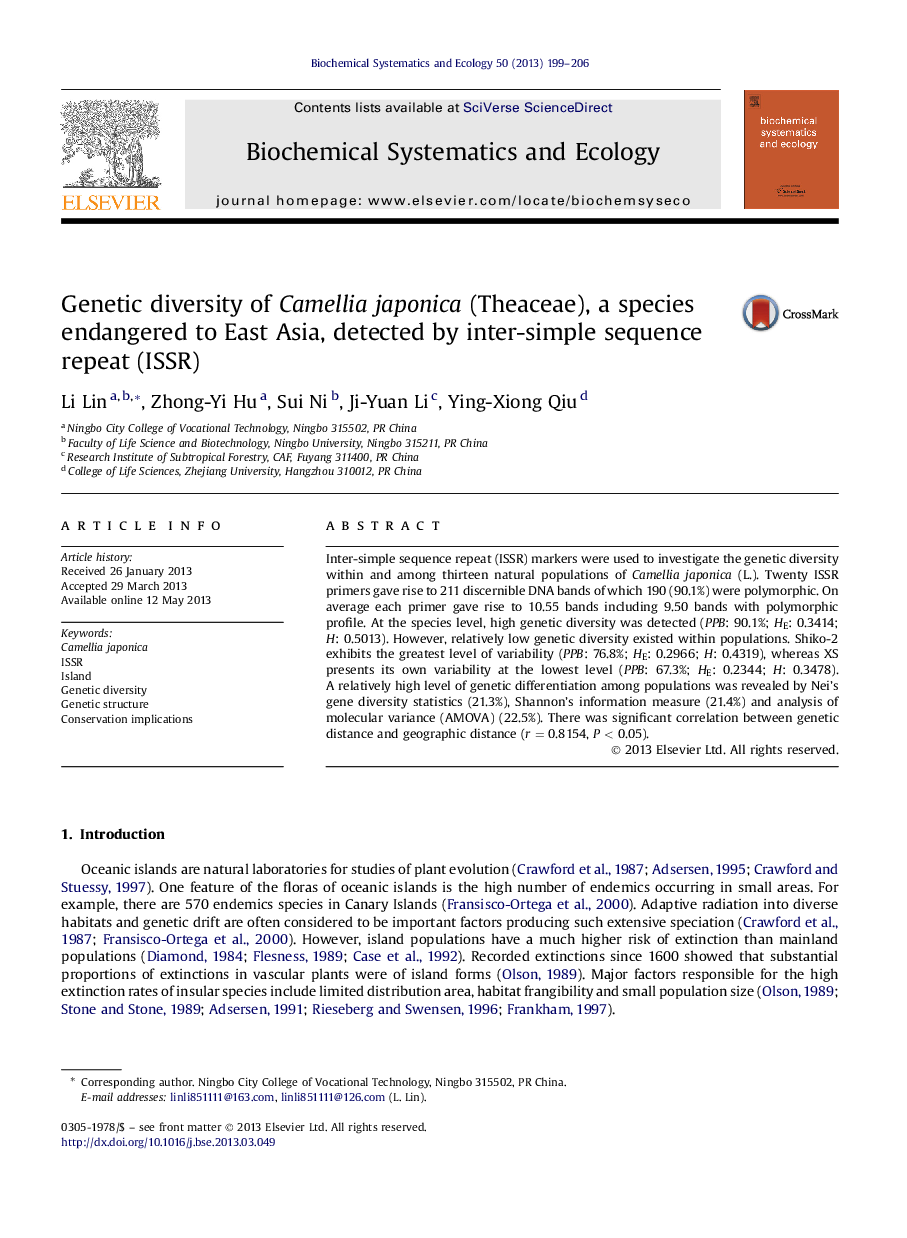| Article ID | Journal | Published Year | Pages | File Type |
|---|---|---|---|---|
| 7769281 | Biochemical Systematics and Ecology | 2013 | 8 Pages |
Abstract
Inter-simple sequence repeat (ISSR) markers were used to investigate the genetic diversity within and among thirteen natural populations of Camellia japonica (L.). Twenty ISSR primers gave rise to 211 discernible DNA bands of which 190 (90.1%) were polymorphic. On average each primer gave rise to 10.55 bands including 9.50 bands with polymorphic profile. At the species level, high genetic diversity was detected (PPB: 90.1%; HE: 0.3414; H: 0.5013). However, relatively low genetic diversity existed within populations. Shiko-2 exhibits the greatest level of variability (PPB: 76.8%; HE: 0.2966; H: 0.4319), whereas XS presents its own variability at the lowest level (PPB: 67.3%; HE: 0.2344; H: 0.3478). A relatively high level of genetic differentiation among populations was revealed by Nei's gene diversity statistics (21.3%), Shannon's information measure (21.4%) and analysis of molecular variance (AMOVA) (22.5%). There was significant correlation between genetic distance and geographic distance (r = 0.8154, P < 0.05).
Related Topics
Physical Sciences and Engineering
Chemistry
Organic Chemistry
Authors
Li Lin, Zhong-Yi Hu, Sui Ni, Ji-Yuan Li, Ying-Xiong Qiu,
